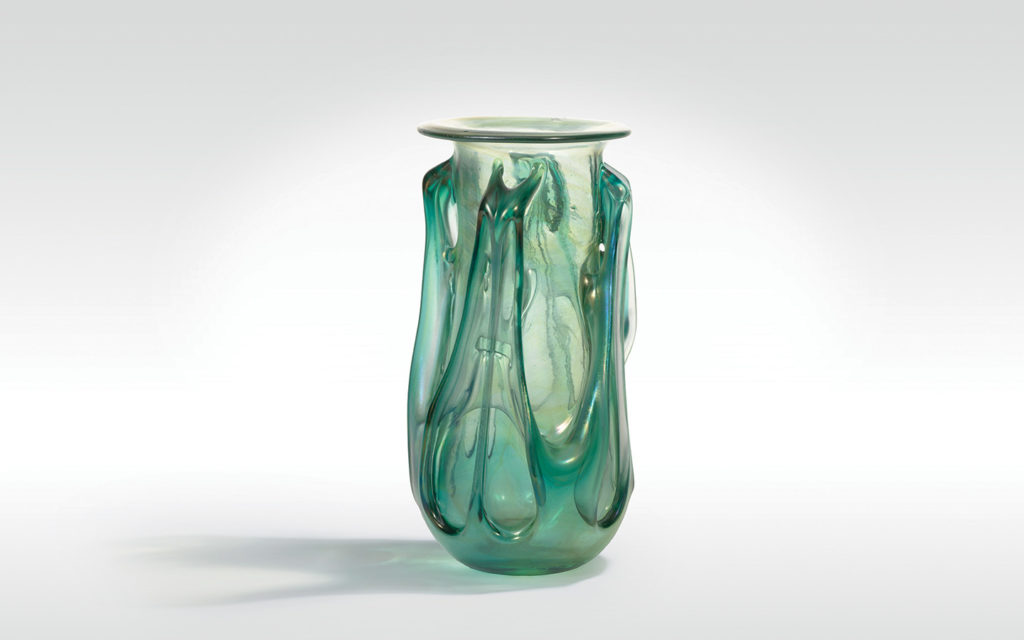What is it?
Artist
Tom McGlauchlin (Town of Turtle 1934–2011 Toledo, Ohio)
Title
Steam Bubble Form
Year
c. 1966
Medium
Blown glass
Dimensions
12 1/4 x 6 ½ x 6 ½ in.
Credit line
Gifted 2012, Gary John Gresl
About the Work
About
Tom McGlauchlin’s association with Harvey K. Littleton began when McGlauchlin was first an undergraduate and then a graduate student at the University of Wisconsin–Madison. Serving as Littleton’s assistant for three years beginning in 1958, McGlauchlin taught his pottery classes during the 1960–61 academic year while Littleton was on leave researching glass.
A year later, McGlauchlin participated in Littleton’s first pioneering 1962 workshop on the grounds of the Toledo Museum of Art that was the genesis of the Studio Glass movement; the birth of his first child caused McGlauchlin to join the second workshop, held several months later, during its final days. He later recalled that after only eight hours of glassblowing experience, in the summer of 1964 he was hired to teach an introductory glassblowing class at the University of Iowa. This was the second glass course at an American university, following on the heels of Littleton’s first glassblowing classes of 1962–63 for University of Wisconsin students.
Although Littleton intended the medium to be used for sculptural statements, McGlauchlin explored the vessel form, a direct outgrowth of the blowing process, until the late 1970s. Unlike many of his contemporaries, he chose to investigate until 1973 the properties of the Johns-Manville #475 marbles that had been used in the first Toledo workshop. Captivated with its greenish color, he studied the effects of temperature change, noting that the normal room temperature would cause thin areas to stiffen while thicker areas continued to move which could create beautiful forms.
Taking advantage of this quality of the glass, in this early work, McGlauchlin used tools to manipulate the walls and form bubbles while the vessel was on the blowpipe, shifting the focus from overall form to surface decoration reminiscent of the Art Nouveau period. Until 1978, McGlauchlin explored new ways to integrate bubble motifs into his compositions, furthering the vessel’s potential as a three-dimensional transparent canvas.—Davira S. Taragin

